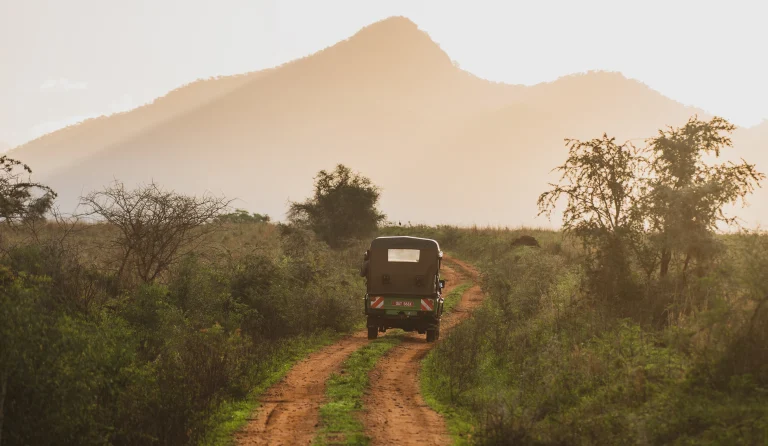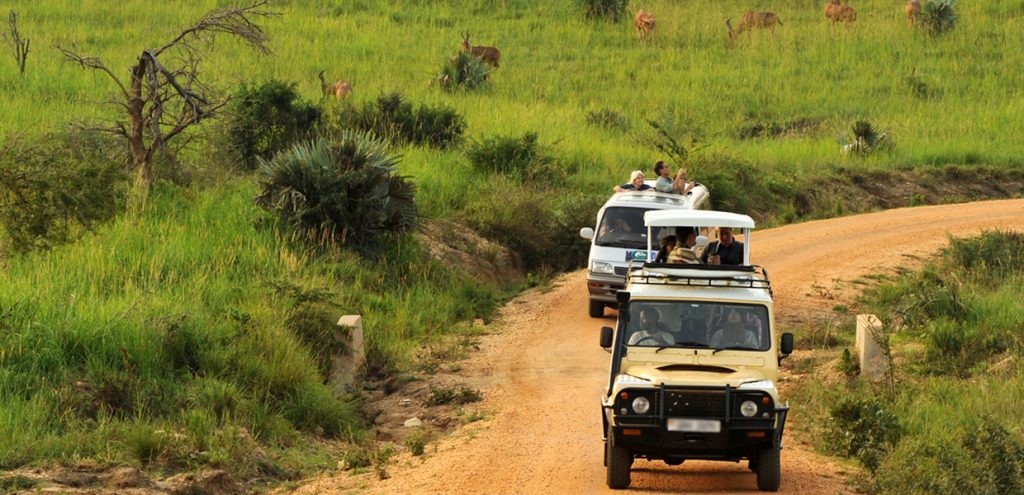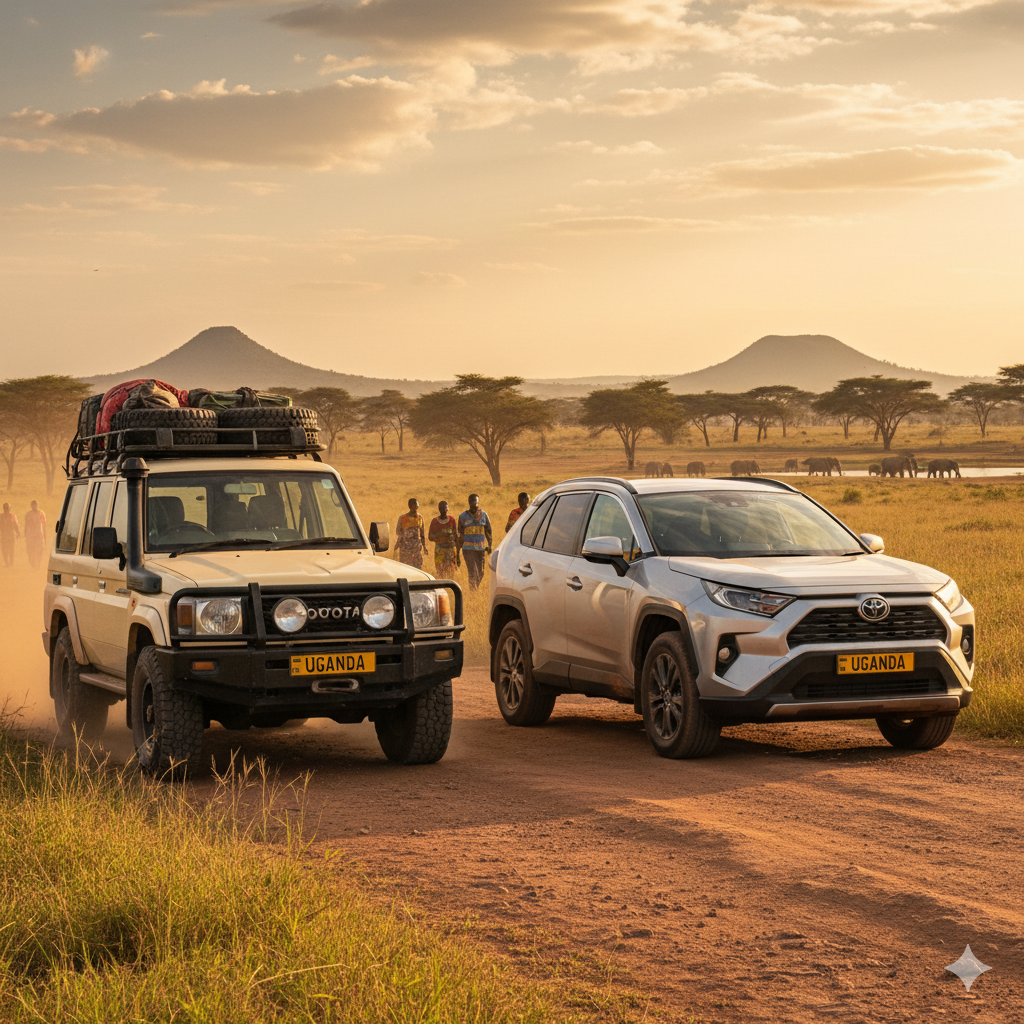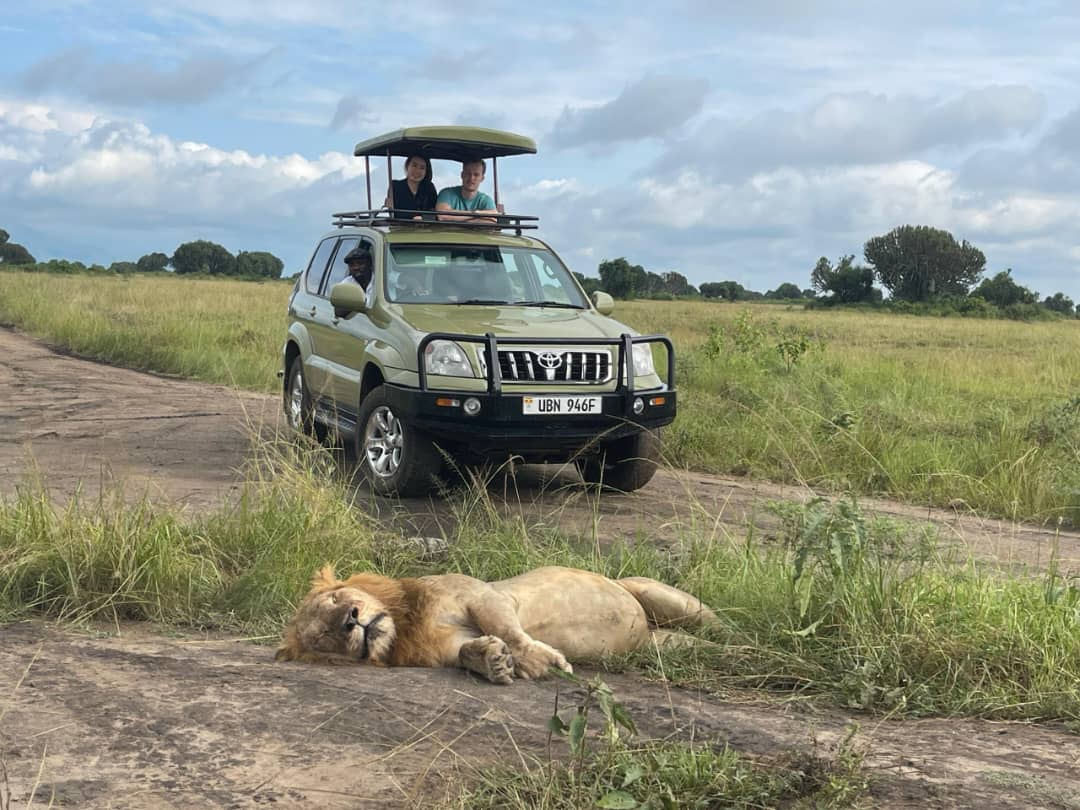Uganda offers some of the world's most amazing wildlife experiences, breathtaking landscapes, and rich cultural…
What to Pack and Check for 4×4 Remote Travel in Uganda

Traveling through Uganda’s remote and diverse landscapes is an exhilarating experience that demands careful preparation, especially when navigating rugged terrains with a 4×4 vehicle. From the lush rainforests and mountainous regions to expansive savannahs and national parks, Uganda’s terrain can be challenging and unpredictable. Proper vehicle preparation and packing the right gear are crucial to ensure safety, comfort, and a successful journey. This guide covers essential checks and packing tips to get your 4×4 ready for remote travel in Uganda.

1. Comprehensive Vehicle Inspection and Maintenance
Before setting off, conduct a thorough mechanical inspection to minimize the risk of breakdowns in remote areas:
- Engine and Fluids: Check engine oil, coolant, brake fluid, power steering fluid, and windshield washer fluid levels. Top up or replace fluids as needed, and consider an oil change if your vehicle is due for one.
- Battery: Inspect the battery terminals for corrosion and ensure connections are tight. Replace the battery if it shows signs of weakness to avoid unexpected failures.
- Tires: Examine all tires, including the spare, for adequate tread depth, even wear, and any damage such as cuts or punctures. Inflate tires to the recommended pressure for off-road driving, and carry a portable air compressor for adjustments on the go.
- Brakes: Test brake responsiveness and listen for unusual noises. Address any issues immediately, as reliable braking is critical on steep or slippery terrain.
- Suspension and Undercarriage: Check for any loose components or damage, as rough roads can exacerbate existing issues.
- Lights and Signals: Ensure all headlights, brake lights, and indicators are functioning properly for safety during night driving or poor visibility conditions.
2. Essential Tools and Spare Parts
Carrying the right tools and spare parts can save your trip if mechanical issues arise far from help:
- Basic Toolkit: Include wrenches, screwdrivers, pliers, and a tire pressure gauge.
- Spare Parts: Bring extra belts, hoses, fuses, spark plugs, and bulbs that are compatible with your vehicle.
- Tire Repair Kit: Include patches, plugs, and a pump to handle punctures.
- Recovery Gear: Pack a high-quality tow strap, snatch block, shackles, a sturdy shovel, and a portable winch if possible. These are vital for self-recovery in mud, sand, or steep inclines.
- Duct Tape, Bailing Wire, and Rope: Useful for temporary fixes and securing loose parts.
3. Safety and Emergency Equipment
Remote travel requires preparedness for medical and communication emergencies:
- First Aid Kit: Stock it with bandages, antiseptics, painkillers, allergy medication, and any personal prescriptions.
- Fire Extinguisher: Ensure it is charged and accessible.
- Flashlight and Extra Batteries: For night-time repairs or emergencies.
- Communication Devices: Carry a fully charged mobile phone with local SIM cards and a power bank. For areas without network coverage, consider a satellite phone or GPS device with offline maps.
- Emergency Food and Water: Pack sufficient drinking water and non-perishable snacks to last beyond your planned travel time in case of delays.
4. Navigation and Documentation
- Maps and GPS: Have up-to-date paper maps as a backup to electronic devices. Use GPS apps that allow offline navigation for Uganda’s remote regions.
- Vehicle Documentation: Carry your vehicle registration, insurance papers, and any permits required for national parks or protected areas.
- Driver’s License: Ensure your license is valid and accepted in Uganda.
5. Personal and Camping Gear
If your trip involves overnight stays in remote locations:
- Camping Equipment: Tent, sleeping bags, cooking stove, and utensils.
- Clothing: Pack weather-appropriate clothes, including waterproof gear for rainy seasons and sturdy boots for hiking.
- Sun Protection: Hats, sunglasses, and sunscreen are essential in Uganda’s sunny climate.
6. Fuel Planning
Fuel stations can be sparse in Uganda’s remote areas:
- Full Tank at Start: Always start with a full fuel tank.
- Extra Fuel Containers: Carry jerry cans with additional fuel safely stored and secured.
- Plan Fuel Stops: Identify fuel stations along your route and refill whenever possible to avoid running out in isolated areas.
7. Understanding Uganda’s Terrain and Weather
- Terrain: Uganda’s roads range from paved highways to rough dirt tracks, often with potholes, mud, or rocky sections. A capable 4×4 with good ground clearance is essential.
- Weather: The rainy seasons (March to May and October to November) can make roads slippery and impassable. Monitor weather forecasts and adjust your plans accordingly.
By thoroughly preparing your 4×4 vehicle, packing essential tools and supplies, and understanding the challenges of Uganda’s remote regions, you can enjoy a safe and rewarding off-road adventure. Proper preparation not only protects you and your vehicle but also ensures you can explore Uganda’s breathtaking landscapes with confidence and peace of mind.
To book a 4×4 rental car in Uganda with a driver or self drive adventure, simply contact us now by sending an email to info@rent4x4caruganda.com or call us on +256-700135510 to speak with our reservations team.



